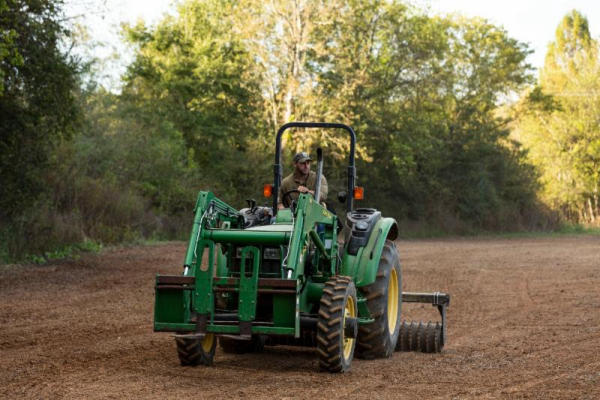The Decline of Waterfowl

Outdoor commentary and legislative issues.

Goldfinch

Editor’s Note: Today’s feature is part one of a three part series authored by Fishing Wire editor, Frank Sargeant.
By Frank Sargeant, Fishing Wire Editor
(This is the first of a three-part series on climate change, a controversial issue that puts anglers, hunters and other outdoors advocates on the front lines in what has become a political hot-button not only across America but around the world. It’s also rapidly becoming a business issue for those of us in the fishing, hunting and boating industries. Today, we look at what it is, if it is, and why it has become a political issue rather than a practical problem that requires solving.)
Earth has no thermostat.
Good thing, too, or my wife would constantly be turning it up.
Ta-da-Boom
But global warming, AKA climate change, is no joke. In fact, the terms have become such memes they get initial capital letters and exclamation points:
Global Warming!
Climate Change!
When it comes to truths that have to be held self-evident, there’s no question there are getting to be more hot times in the old towns most nights. In the new ones, too. Amazingly, 17 of the 18 warmest years since modern record-keeping began have occurred since 2001. Read more


MISSOULA, Mont.– The Boone and Crockett Club Board of Directors recently approved a second year of research funding targeted at finding answers to combat Chronic Wasting Disease (CWD).
The Club and other organizations have been concerned about CWD for quite some time. Together with the Rocky Mountain Elk Foundation and Mule Deer Foundation, the Club founded the CWD Alliance more than 15 years ago.
“When our current Club president took office in January of 2017, he made CWD one of the primary focuses of his administration,” explained Dr. Josh Millspaugh, Boone and Crockett Professor of Wildlife Conservation at the University of Montana and subcommittee chair of the grants program. “With the help of our professionals on the ground, we expanded the Club’s role in addressing CWD by providing support, leadership, organization, and bringing experts together to set a path, which will have a meaningful impact on policy, research and education, and help coordinate stakeholders’ activities.”
“Denying we have a problem and just kicking at the dirt isn’t going to cut it,” added Ben B. Hollingsworth Jr., president of the Boone and Crockett Club. “I’ve committed my time as Club president to getting answers we can use. More research will pay huge dividends in our ability to manage this disease.”
The Club’s focus on CWD was reinforced by a recent unanimous decision by its Board to provide additional funding for research. This focus includes working with U.S. Congress on the Research Title of the pending Farm Bill to make CWD a high-priority research focus for our nation’s land-grant universities. Read more

USFWS survey says most populations are still above long-term averages
MEMPHIS, TN – The U.S. Fish and Wildlife Service (FWS) today released its report on 2018 Trends in Duck Breeding Populations, based on surveys conducted in May and early June by FWS and the Canadian Wildlife Service.
Overall duck numbers in the survey area remain high. Total populations were estimated at 41.2 million breeding ducks in the traditional survey area, 13 percent lower than last year’s estimate of 47.3 million and percent and 17 percent above the long-term average. The projected mallard fall flight index is 11.4 million birds, down from the 2017 estimate of 12.9 million.
The main determining factor for duck breeding success is wetland and upland habitat conditions in the key breeding landscapes of the Prairies and the Boreal Forest. Conditions observed across the U.S. and Canadian survey areas during the 2018 breeding population survey were similar to or, in a few areas, declined compared to the 2017 survey.
The total pond estimate for the United States and Canada combined was 5.2 million, which is 14 percent below the 2017 estimate of 6.1 million and identical to the long-term average of 5.2 million. Read more

PHOENIX — They’re the chattery, fuzzy, winged creatures of the night and now they’re the star attractions of Arizona Game and Fish Department’s latest live-streaming wildlife camera.
AZGFD recently installed what is believed to be the first live-streaming wild bat roost camera in Arizona. Viewers tuning in to the “bat cam” can watch as migratory Yuma myotis bats, and other bat species, roost at the Cluff Ranch Wildlife Area near Safford in southeastern Arizona.
“Bats are truly amazing animals,” said Randy Babb, AZGFD Watchable Wildlife Program manager. “In Arizona, we have a wonderful diversity of bats that perform pretty much all the same tasks that birds do. Some – such as the lesser long-nosed and Mexican long-tongued bats – drink nectar, while others are voracious insect predators, consuming up to 1,000 mosquito-sized insects an hour. We’re really excited to offer this fascinating real-time glimpse into an active bat roost.”
Public hearings scheduled in Kalispell, Missoula, Great Falls, Conrad
The Fish and Wildlife Commission has approved language for a proposed administrative rule that would codify population objectives for grizzly bears in the Northern Continental Divide Ecosystem (NCDE).
The decision on August 9, 2018 sets into motion a public comment period that will run from Aug. 24 through Oct. 26. Public hearings will be held in Kalispell, Missoula, Great Falls, and Conrad. Montana Fish, Wildlife & Parks staff will explain and answer questions about the proposed population objectives at the hearings and take public comment.
The population objective is for NCDE, which is one of six designated recovery areas for grizzly bears in the lower-48 states. Grizzly bears in the NCDE are currently listed as threatened under the Endangered Species Act, although they have met their recovery criteria and may be proposed for delisting in the future.
The NCDE subcommittee of the Interagency Grizzly Bear Committee (IGBC) released a revised conservation strategy for grizzly bears (found here) earlier this summer. This document summarizes the commitments and coordinated efforts made by the state, tribal and federal agencies to manage and monitor the grizzly bear population and its habitat upon delisting. Read more
A wounded grizzly bear was killed by FWP officials on Monday on the Marias River west of state highway 417 near Shelby.
The bear was shot July 26 and the incident is under investigation by Montana Fish, Wildlife and Parks and the U.S. Fish and Wildlife Service. The bear was killed because it was not likely to survive the gunshot wound and due to concerns for public safety.
FWP first trapped this 3-year-old male grizzly last October near Choteau where it had been eating apples out of trees near a residence. The bear was collared and released on National Forest land. This summer, the bear returned the prairie lands along the Marias River and got into additional unsecured attractants (chicken feed, and dog food) at one or more residences. After approaching another residence, the bear was shot. FWP had tried to locate and trap the bear but was unsuccessful. Read more

WEST POINT, MS – The latest episode of “The Specialists” from Mossy Oak Capture features Mossy Oak BioLogic’s Austin Delano as he tells the story of his evolution from a kid who liked to hunt and worked on a farm to an industry-leading and highly respected GameKeeper.</d
On the DNR’s Wildtalk podcast, wildlife staff chew the fat and shoot the scat about all things habitat, feathers and fur. With insights, interviews and listener questions answered on the air, you’ll come away with a better picture of what’s happening in the world of Michigan wildlife.
In episode #3, find out more about the DNR’s Hunting Access Program, which helps people find land to hunt throughout the state. Later in the show, learn what you should do if you discover a raccoon in your attic!
Questions about something you heard on the podcast? Contact the DNR Wildlife Division at 517-284-WILD (9453).

With the start of the school year fast approaching for many, don’t forget to include Michigan’s wildlife in your class plans.
The DNR offers a variety of wildlife classroom curricula at the elementary, junior high and high school levels, and each program is developed to fit current state educational standards. Better yet, they’re free to educators! Topics include: